Industrial Hemp Cultivation: A Complete Guide
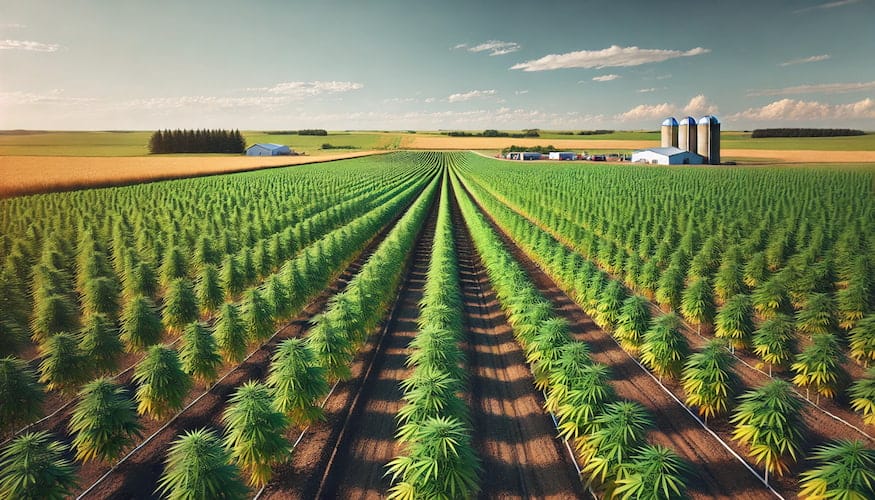
Industrial hemp, a versatile and sustainable crop, has gained global attention for its numerous applications. From textiles and building materials to biofuel and health supplements, hemp is one of the oldest cultivated plants in human history. As laws surrounding hemp cultivation have relaxed in many regions, more farmers and entrepreneurs are looking to capitalize on this plant’s potential. This guide explores the complete process of cultivating industrial hemp, covering everything from soil preparation and seed selection to harvesting and post-harvest processing.
What Is Industrial Hemp?
Industrial hemp refers to a variety of the Cannabis sativa species that is specifically grown for industrial purposes rather than recreational or medicinal use. Unlike its psychoactive cousin, marijuana, industrial hemp contains very low levels of tetrahydrocannabinol (THC), typically less than 0.3 percent, which means it does not have intoxicating effects.
Hemp is prized for its versatility, with applications in sectors like:
- Textiles: Hemp fibers are used to produce fabric, rope, and yarn.
- Construction: Hempcrete, a bio-composite material made from hemp hurds and lime, is gaining popularity in eco-friendly building practices.
- Biofuel: Hemp oil can be converted into biodiesel.
- Health: Hemp seeds are rich in omega-3 and omega-6 fatty acids, and cannabidiol (CBD) derived from hemp is used in numerous health products.
Legal Considerations
Before growing your own hemp, it’s essential to understand the legal framework in your country or region. In many countries, including the United States, the cultivation of industrial hemp is legal but heavily regulated. Farmers typically need to obtain a license and must comply with regulations concerning THC levels, often requiring periodic testing to ensure the plants stay below the legal THC threshold.
Step 1: Selecting the Right Variety of Hemp
Choosing the appropriate variety of hemp depends on the intended end use. There are three primary types of industrial hemp varieties:
- Fiber Varieties: These are tall, stalky plants grown for their long fibers, which are used in textiles, ropes, and biocomposites.
- Grain Varieties: These are bushier plants, optimized for producing seeds used in food products, oils, and animal feed.
- CBD Varieties: These are typically shorter, bushier plants grown for their flowers, which are processed to extract CBD oil.
It’s important to select the right seed variety that will thrive in your specific climatic conditions and yield the desired end product. Seed banks and certified suppliers often provide a wide range of hemp strains suited for different environmental factors, such as temperature, humidity, and soil type.
Step 2: Preparing the Soil
Hemp thrives in well-drained, fertile soils with a pH range of 6.0 to 7.5. Before planting, a soil test should be conducted to determine the soil’s pH and nutrient levels. Hemp requires nitrogen, phosphorus, and potassium, as well as a good supply of micronutrients like calcium, magnesium, and sulfur.
Here are the steps for soil preparation:
- Test Soil: Conduct a soil test to identify nutrient deficiencies and pH levels.
- Amend the Soil: If needed, amend the soil with organic matter such as compost, manure, or cover crops to improve its structure, water retention, and nutrient levels.
- Tillage: While hemp can be directly planted into the soil, light tilling or harrowing may be required to create a fine seedbed, especially in compacted or heavy soils.
- Drainage: Ensure proper drainage, as hemp roots do not tolerate waterlogged conditions.
A cover crop, such as legumes, can be planted prior to hemp to fix nitrogen in the soil naturally, providing a good boost for the subsequent hemp crop.
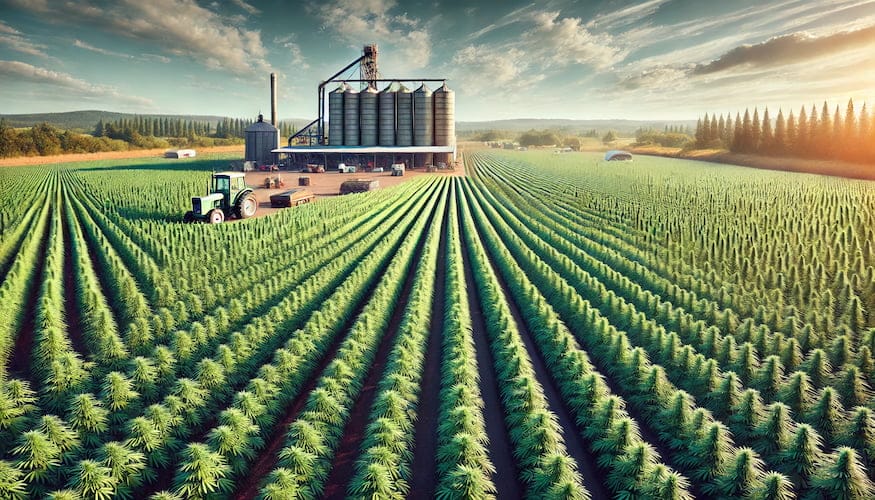
Step 3: Planting Hemp
Hemp is typically planted in late spring when soil temperatures reach around 50 degrees Fahrenheit (10°C). The optimal planting time is highly dependent on your local climate. Hemp seeds are usually sown directly into the soil, either by hand or using a seed drill.
Planting Methods:
- Seed Rate: The seeding rate depends on the type of hemp being grown. Fiber varieties are planted densely, at a rate of around 40 to 80 pounds per acre, to encourage tall, slender plants. CBD and grain varieties are planted less densely to allow for better branching and flower production.
- Depth: Seeds should be planted about 1/2 to 1 inch deep. This allows the seeds to access moisture in the soil while also protecting them from drying out.
- Row Spacing: For fiber hemp, rows are spaced closely (4 to 6 inches apart) to encourage tall growth. For CBD or grain varieties, row spacing is typically wider (30 to 40 inches apart) to allow the plants to spread and develop more flowers.
Step 4: Watering and Irrigation
Hemp is a relatively drought-tolerant crop, but during its early growth stages, it requires adequate moisture. On average, hemp needs 20 to 30 inches of water throughout its growing season, but water needs can vary based on climate, soil type, and plant variety.
- Irrigation Systems: In areas with low rainfall, drip irrigation or overhead systems can be used to supplement water. However, care must be taken not to overwater, as hemp is sensitive to waterlogged soil.
- Water Management: After the establishment stage, hemp can tolerate dry periods but will perform better if watered consistently, particularly during flowering and seed production.
Step 5: Nutrient Management
Hemp is a nutrient-hungry crop, particularly when it comes to nitrogen. A balanced fertilization program is essential to maximize yield and plant health.
- Nitrogen: Hemp needs high levels of nitrogen, particularly during its vegetative stage. A typical rate is 100 to 150 pounds of nitrogen per acre.
- Phosphorus and Potassium: Phosphorus is important for root development and flowering, while potassium plays a role in disease resistance and overall plant health. Phosphorus and potassium rates are usually around 40 to 80 pounds per acre.
- Micronutrients: Hemp may also require micronutrients like boron, iron, and zinc, depending on the soil type.
Step 6: Weed Control
One of hemp’s natural advantages is its ability to outcompete weeds due to its fast growth and dense canopy. However, in the early stages of growth, weeds can compete with hemp for nutrients, water, and light.
- Mechanical Control: Tillage and harrowing before planting can help reduce weed populations. Post-planting, shallow cultivation can be used in the early stages of growth until the hemp plants establish a canopy.
- Cover Crops: Using cover crops before planting hemp can also suppress weed growth and improve soil structure.
Chemical herbicides are generally avoided in industrial hemp cultivation, particularly for CBD varieties, as residual chemicals can affect the quality of the final product.
Step 7: Pest and Disease Management
While hemp is naturally resistant to many pests and diseases, it is not immune. Common pests affecting hemp include:
- Aphids
- Caterpillars
- Spider Mites
- Cutworms
Beneficial insects, such as ladybugs and parasitic wasps, can help manage pest populations. Additionally, introducing biological control methods and maintaining biodiversity on the farm can reduce the risk of infestations.
Fungal diseases like powdery mildew and botrytis can also affect hemp, particularly in humid conditions. Good air circulation and proper plant spacing can help mitigate these risks.
Step 8: Harvesting Hemp
Harvest time depends on the variety of hemp and its intended use. Typically, hemp is harvested between 100 and 120 days after planting.
- Fiber Hemp: For fiber production, hemp is harvested when the plants begin to flower. The stalks are cut down using a sickle or mower and then left in the field to “rett,” a process where moisture helps separate the fibers from the stalk.
- Grain Hemp: Hemp grown for seeds is harvested when 70 to 80 percent of the seeds have matured. The seed heads are cut off using a combine, and the seeds are cleaned and dried to prevent mold.
- CBD Hemp: CBD hemp is usually hand-harvested to preserve the flowers, which contain the highest concentration of CBD. The flowers are then dried and processed to extract CBD oil.
Step 9: Post-Harvest Processing
Once harvested, hemp must be processed according to its end use.
- Fiber Processing: After retting, the stalks are dried and then broken down into fiber using a process called decortication. The fibers are then spun into yarn or processed into other materials.
- Grain Processing: Seeds must be cleaned and dried to reduce moisture content and prevent spoilage. The seeds can then be pressed for oil or processed into food products.
- CBD Extraction: CBD flowers are dried and cured to maintain their potency. After drying, the flowers can be extracted using methods such as CO2 extraction, ethanol extraction, or steam distillation to isolate the CBD.
Challenges in Hemp Cultivation
While hemp presents numerous opportunities for farmers, there are also challenges:
- Regulatory Uncertainty: As regulations continue to evolve, farmers must stay up-to-date on laws related to cultivation, processing, and sales.
- Market Fluctuations: The hemp market, particularly for CBD products, can be volatile, with price fluctuations affecting profitability.
- THC Compliance: Farmers must ensure their hemp crops remain under the legal THC limit. If plants exceed this limit, they may be classified as marijuana and subject to destruction or other legal penalties. This can be especially challenging as environmental factors, such as stress from drought or nutrient deficiencies, can cause THC levels to fluctuate.
- Infrastructure: Unlike traditional crops, the infrastructure for hemp processing—particularly for fiber and CBD extraction—is still developing. Farmers may need to transport their hemp long distances to processing facilities, which can increase costs and logistical challenges.
- Lack of Research and Education: While there is increasing interest in hemp, research on best practices for growing, harvesting, and processing industrial hemp is still limited compared to other staple crops like corn or wheat. As a result, farmers often have to learn through trial and error.
Opportunities in Hemp Cultivation
Despite the challenges, hemp offers significant opportunities:
- Sustainability: Hemp is a sustainable crop that can improve soil health, requires less water than many traditional crops, and sequesters carbon from the atmosphere, making it an attractive option for farmers looking to adopt environmentally friendly practices.
- Diverse Product Range: Hemp can be grown for a variety of markets, from textiles and building materials to health supplements and biofuel. This diversity provides farmers with multiple revenue streams.
- Growing Consumer Demand: The demand for hemp-derived products, particularly CBD and hemp-based foods, continues to rise. As consumers become more conscious of sustainability and health, hemp is well-positioned to meet these market demands.
- Government Support: In many countries, governments are beginning to support hemp cultivation through grants, subsidies, and research initiatives, providing additional financial and technical assistance to farmers.
Step 10: Complying With THC Testing Requirements
In most regions where industrial hemp cultivation is legal, strict THC testing protocols are in place to ensure compliance with local laws. These tests are conducted at various stages of the hemp plant’s life cycle, particularly before harvest, to confirm that the THC levels remain within the legal limit, which is typically 0.3 percent or lower.
Key Considerations:
- Testing Timing: Most regulatory bodies require testing 15 to 30 days before harvest to ensure compliance. However, THC levels can rise during the final stages of flowering, so timing the test is crucial to avoid crossing the legal threshold.
- Sampling Process: Testing usually involves taking a representative sample from different parts of the field. The testing protocol must be followed strictly to avoid potential legal issues.
- Non-compliant Crops: If the THC level exceeds the legal limit, the crop may be classified as marijuana and subject to destruction. To avoid this, farmers can select hemp varieties known for low THC production and monitor the crop closely throughout the growing season.
Step 11: Hemp and Crop Rotation
Hemp is not only a cash crop but also an excellent rotational crop for improving soil health. Due to its deep taproot, hemp helps break up compacted soil, allowing better water infiltration and root growth for subsequent crops. Furthermore, hemp can suppress weeds, reduce soil erosion, and add organic matter to the soil when its residue is incorporated after harvest.
Farmers can rotate hemp with crops like:
- Legumes (e.g., soybeans, clover): Legumes fix nitrogen in the soil, which benefits hemp growth in the following season.
- Cereal Grains (e.g., wheat, barley): After hemp harvest, the soil is well-prepared for grain crops due to its aeration and reduced weed pressure.
- Cover Crops (e.g., rye, alfalfa): Planting cover crops after hemp can protect the soil from erosion, enhance soil fertility, and further suppress weeds.
Step 12: Marketing and Selling Hemp Products
Once harvested and processed, the next step for hemp growers is marketing their products. This can involve selling raw materials (fiber, grain, or CBD flowers) to manufacturers or, in some cases, direct-to-consumer sales if the farmer processes the crop themselves.
Marketing Channels:
- Wholesale: Farmers can sell bulk hemp fiber, grain, or CBD biomass to processors or manufacturers. Finding reliable buyers is crucial, and many farmers establish contracts before planting to ensure they have a buyer lined up.
- Retail: Some farmers choose to vertically integrate their operations, processing hemp into products such as CBD oils, textiles, or food items, and selling directly to consumers through online platforms, farmer’s markets, or retail outlets.
- Cooperatives: Joining a hemp cooperative can provide farmers with better access to processing facilities, distribution channels, and collective bargaining power.
Step 13: Diversifying With Hemp Byproducts
In addition to primary products like fiber, grain, and CBD, hemp cultivation offers numerous byproducts that can create additional revenue streams.
- Hemp Hurd (Woody Core): Used in construction materials like hempcrete or as animal bedding.
- Hemp Seeds: A byproduct of grain production, hemp seeds can be pressed for oil or processed into protein powders and food supplements.
- Hemp Oil: Hemp seed oil can be used in cosmetic products, soaps, and cooking.
- Biofuel: Hemp biomass can be converted into ethanol or biodiesel, providing an eco-friendly fuel source.
These byproducts provide added value to the crop, making hemp cultivation even more financially viable for farmers.
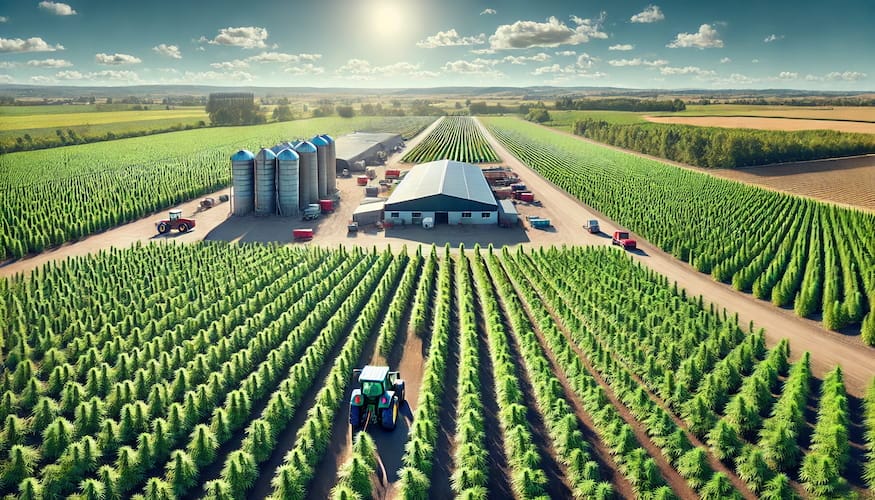
Sustainability and the Future of Hemp Cultivation
As global demand for sustainable agricultural practices grows, hemp is well-positioned as a key player in the future of farming. Its low environmental impact, coupled with its versatility, makes it a valuable crop in the fight against climate change and resource depletion.
- Carbon Sequestration: Hemp is highly efficient at absorbing carbon dioxide from the atmosphere, potentially playing a role in carbon-offset farming programs.
- Reduction in Pesticides and Herbicides: Because of its natural resistance to pests and weeds, hemp cultivation often requires fewer chemicals, reducing the environmental impact of farming.
- Water Efficiency: Compared to crops like cotton or corn, hemp requires significantly less water, making it suitable for regions experiencing water scarcity.
- Soil Health: Hemp’s ability to restore soil health through its deep-root system and contribution of organic matter makes it an ideal candidate for regenerative agriculture systems.
Conclusion
Industrial hemp cultivation offers tremendous potential for farmers looking to diversify their crops and tap into new, sustainable markets. While there are challenges, including regulatory compliance and market fluctuations, the benefits of hemp as a renewable resource, combined with its vast range of applications, make it an attractive option for modern agriculture.
By selecting the right variety, preparing the soil properly, managing nutrients and pests effectively, and following proper harvesting and post-harvest practices, farmers can successfully cultivate industrial hemp and contribute to the growing demand for hemp-based products. With continued research and infrastructure development, the future of industrial hemp looks bright, offering both environmental and economic benefits for farmers and consumers alike.
In this rapidly evolving landscape, those who stay informed about legal requirements, market trends, and cultivation best practices are well-positioned to thrive in the world of industrial hemp.
Subscribe to our newsletter
Your dream garden is a subscription away! Join our email list and enter our Monthly Seed Giveaway. Imagine the possibilities each month as you await your chance to win.
By clicking the "JOIN US!" button, I agree and accept the privacy policy of SeedsHereNow.
Suggested Articles
;)
;)
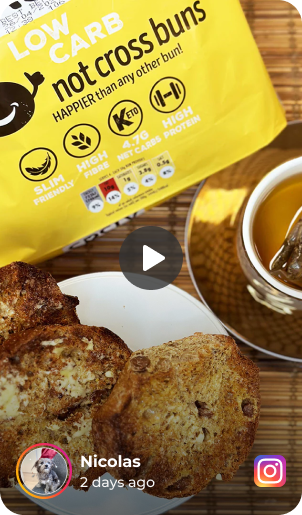;)



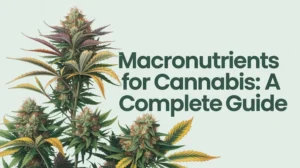
 16 Dec 2025
16 Dec 2025  7 min read
7 min read

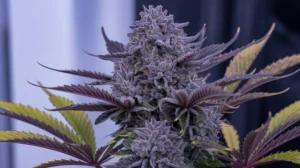
 September 23, 2024
September 23, 2024 


RESPONSES (0)
No responses yet. Be the first to respond!